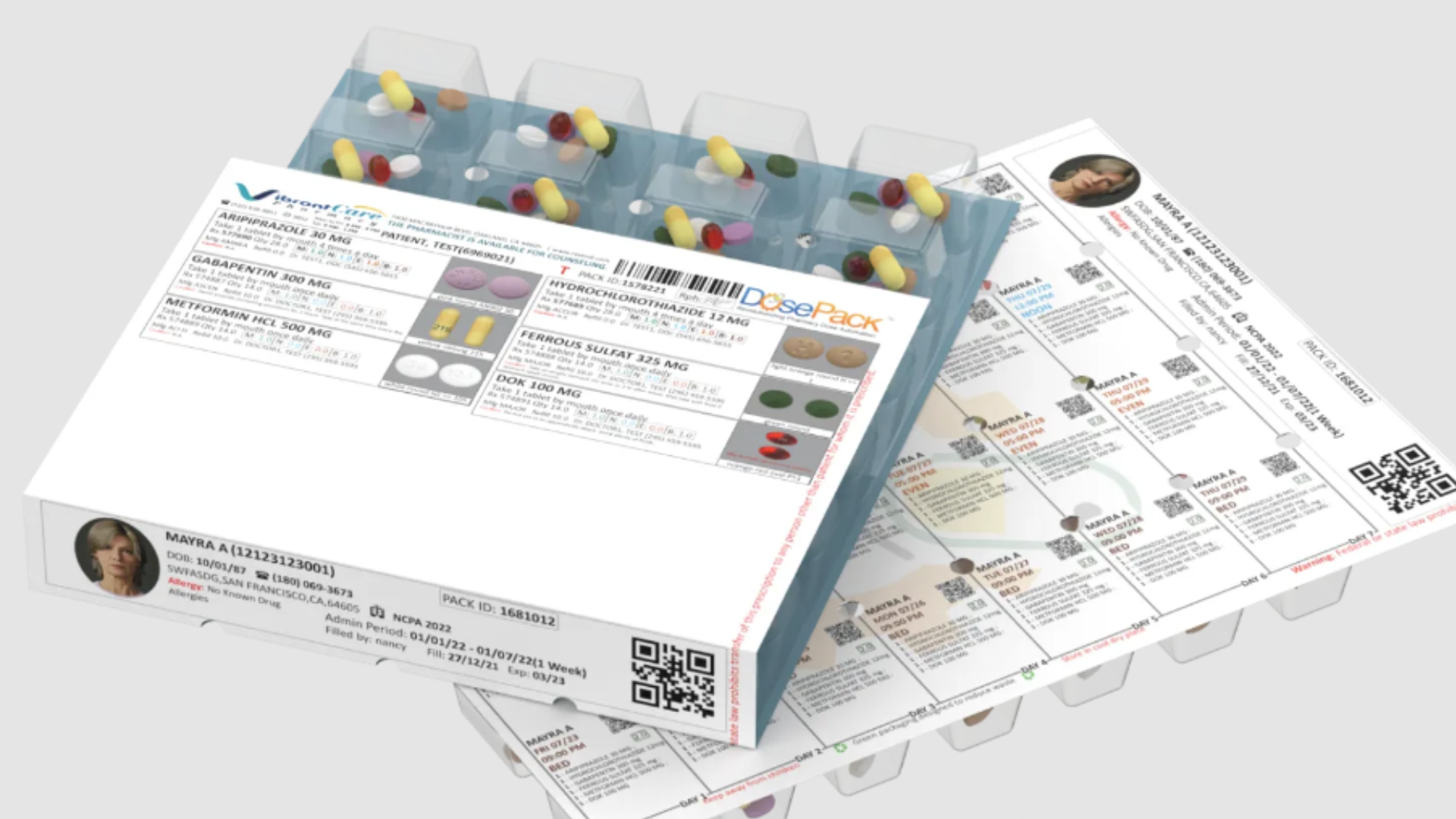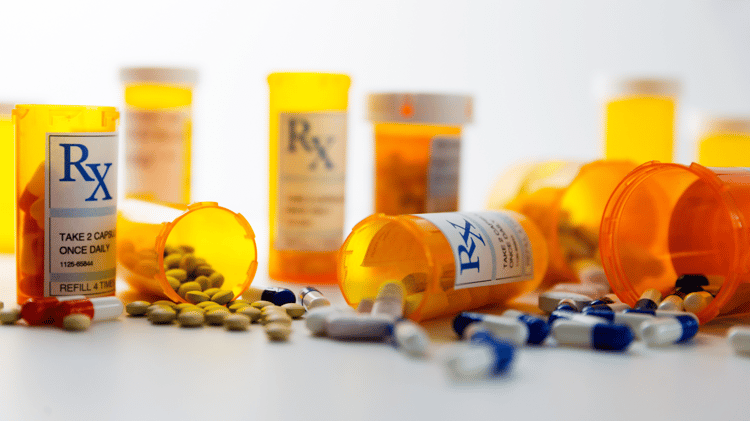How to Reduce Hazardous Pharmaceutical Waste With Compliance Packaging
In healthcare, long-term care facilities play a critical role in providing specialized support for individuals with chronic illnesses or conditions. And while they may do a good job taking care of patients, they often fall short in caring for the environment.
Every year, nursing homes in the United States generate an alarming 740 tons of pharmaceutical waste.
If you own or run a long-term care facility, you’ve probably seen the amount of expired, unused, partially used, contaminated, damaged, and recalled medications thrown out daily.
Medication waste pollution is a growing problem throughout the United States, but it’s not hopeless. Thanks to technology, long-term facilities like yours can nip the issue in the bud.
The Environmental Impact of Medical Waste

Medical or healthcare waste is generated in healthcare settings or due to healthcare activities.
According to Healthcare Waste—A Serious Problem for Global Health, approximately 15% of healthcare waste is hazardous and can be infectious, toxic, or radioactive.
Hazardous pharmaceutical waste encompasses expired, unused, or contaminated medications that can pose a risk to human health and the environment. If improperly disposed of, they can cause:
- Water Contamination. When flushed down the toilet or improperly managed, hazardous pharmaceutical waste can seep into water systems, contaminating the aquatic ecosystems and human water supply.
- Soil Contamination. Hazardous pharmaceutical waste improperly disposed of in the ground can result in plant absorption and can enter the food chain, potentially posing risks to both human health and wildlife.
- Antimicrobial Resistance. Residual pharmaceuticals can encourage the proliferation of resistant bacteria in the environment, potentially reducing antibiotics' effectiveness in humans and animals.
- Air Pollution. Incineration, a widely practiced hazardous waste disposal method, releases harmful pollutants and greenhouse gases into the atmosphere, contributing to air pollution and climate change.
How Compliance Packaging Helps Hazardous Waste Reduction

Hazardous pharmaceutical waste accumulates rapidly in long-term care facilities where patients often require multiple medications. In fact, the California Medical Waste Management Act’s definition of “medical waste generator” is broad enough to include residential care facilities for the elderly (RCFEs) and continuing care retirement communities (CCRCs).
As long-term facilities like yours strive to ensure the well-being of patients, it's equally important to address your practices’ impact on the environment.
You can practice collecting and segregating pharmaceutical waste properly, disposing of them through the appropriate channels, and participating in take-back programs and mail-back services—or you can get to the root cause of the problem and reduce the waste you generate by adopting compliance packaging in your organization.
What is Compliance Packaging?
Compliance packaging, or adherence packaging, refers to organizing medications in pre-dosed, easy-to-use formats, such as blister, unit-dose, or multi-dose packaging. This helps patients adhere to their prescribed medication regimens accurately and consistently, reduce medication errors, and enhance overall patient safety.
Commonly used in long-term facilities for convenience and practicality, adherence packaging is typically labeled with the drug information and date and time of administration. Some organizations, however, use technology-enabled compliance packaging. These have additional features that further simplify medication management like:
- High-visibility font
- Patient and facility information
- Patient image
- Pill count information
- Tear-away perforations for easy removal
- QR code for electronic health record (EHR) integration
- The ability to repackage previously dispensed medications for the same patient, according to the California Board of Pharmacy Business and Professions Code Section 4052.7
Compliance packaging is especially useful for individuals on multiple medications or with complex dosing schedules.
How Compliance Packaging Benefits You, Your Patients, and the Environment
Compliance packaging not only helps make medication management easier for patients, facilities, and pharmacies, but it also contributes to the success of your healthcare waste reduction strategies. Here are some ways eco-friendly pharmaceutical packaging can help you deliver exceptional patient care:
Reduces Medication Errors
Compliance packaging—especially when technology-enabled—helps ensure your patients receive the correct dosage of the right medication at the right time, minimizing the risk of errors and ultimately enhancing patient safety.
Minimizes Medication Surplus and Deficit
Overstocking medications increases pharmaceutical waste due to expired drugs, and understocking means you can’t prescribe medications when needed. Adherence packaging robots help facilitate inventory management by accurately tracking medication purchases, the dates of purchase, and the amount it dispenses. Compliance packaging ensures you have the correct amount of medications in stock to match supply and demand.
Prevents Cross-Contamination
Individually sealed doses reduce the chances of cross-contamination between medications, preserving their efficacy, minimizing the chances of medication mix-ups, and avoiding adverse reactions or side effects.
Reduces Pharmaceutical Waste
High-quality compliance packaging helps reduce the amount of pharmaceutical waste your facility produces in at least two ways:
- It provides patients with pre-organized doses accurately aligned with their treatment regimens. Adherence packaging effectively minimizes the likelihood of having surplus or leftover drugs by dispensing only the required amount of medication at the designated time.
- It protects medications from external factors that degrade their quality (e.g., light, moisture, and air), which helps extend their shelf life.
By reducing the number of leftover and expired drugs (which often go unused and end up as waste), adherence packaging helps reduce medication waste pollution.
Protect Your Patients and Our Planet With Compliance Packaging by DosePacker

The old saying “prevention is better than cure” rings true even when it comes to medication waste management.
Integrating compliance packaging in RCFEs and CCRCs isn't just a strategy to enhance patient care—it's a pivotal step toward environmental sustainability. By reducing the amount of hazardous pharmaceutical waste your facility generates, you demonstrate your commitment to the health of your patients and our planet.
But your facility’s journey toward sustainable healthcare solutions doesn't end with compliance packaging. Leading pharmacy technology companies like DosePacker are constantly creating innovations to automate pharmacy operations and increase productivity.
Whether your organization is looking for eco-friendly pharmaceutical packaging, mobile apps to help medication administration, or intuitively designed storage solutions, DosePacker is fully equipped to help your facility’s operations, compliance, and healthcare waste reduction strategies.
